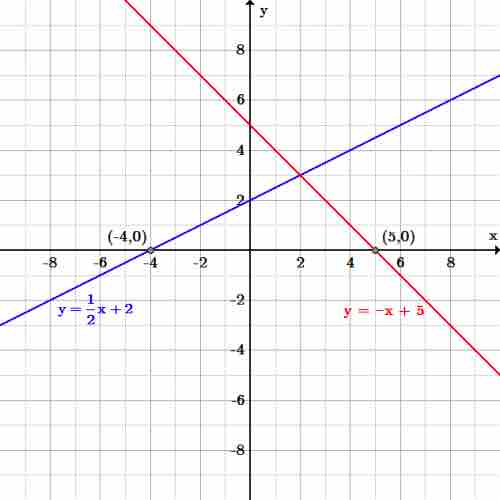The graph of a linear function is a straight line. Graphically, where the line crosses the
Finding the Zeros of Linear Functions Graphically
Zeros can be observed graphically. An
All lines, with a value for the slope, will have one zero. To find the zero of a linear function, simply find the point where the line crosses the

Zeros of linear functions
The blue line,
Finding the Zeros of Linear Functions Algebraically
To find the zero of a linear function algebraically, set
The zero from solving the linear function above graphically must match solving the same function algebraically.
Example: Find the zero of $y=\frac{1}{2}x+2$ algebraically
First, substitute
Next, solve for
The zero is